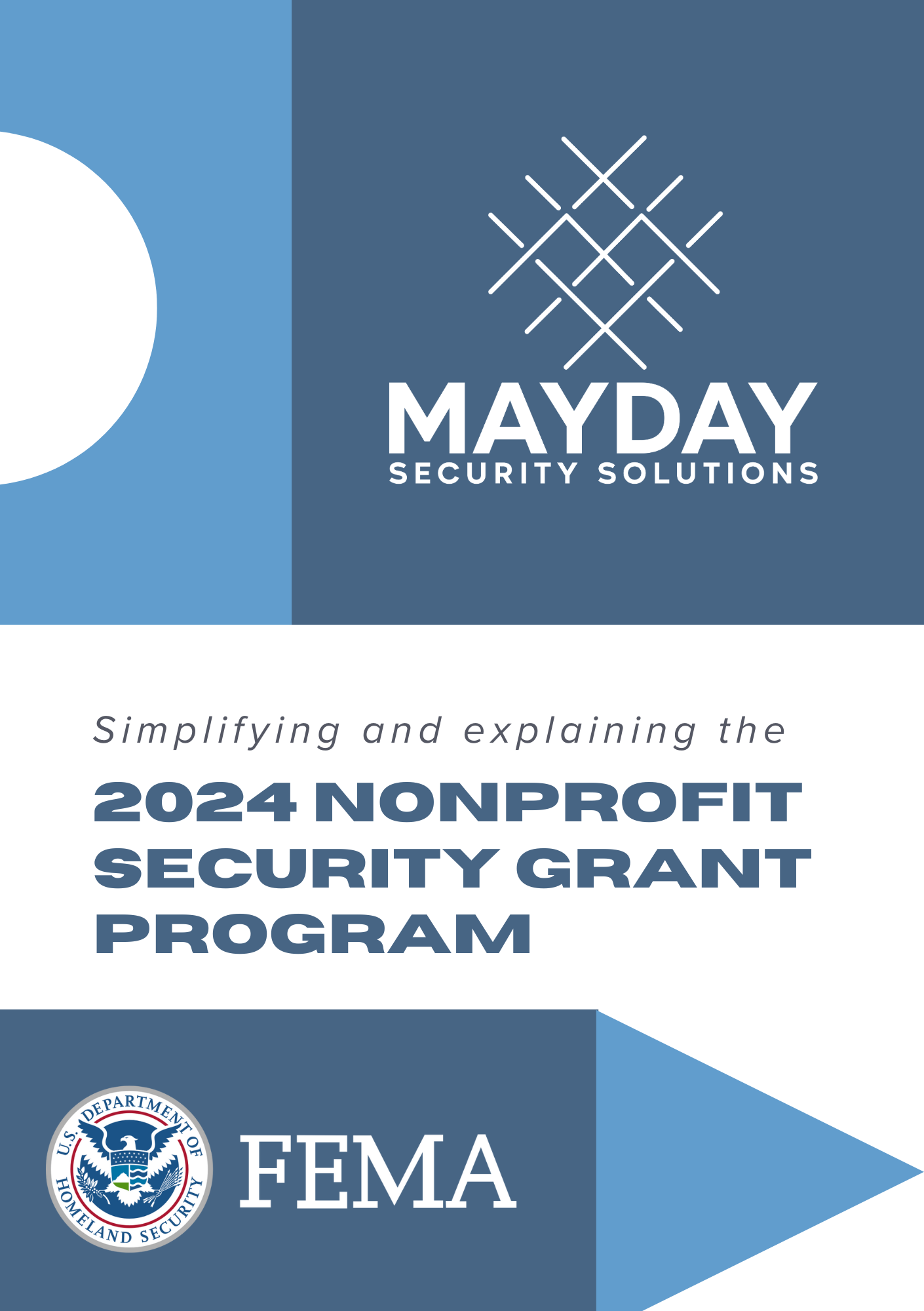2024
Nonprofit Security Grant Program (NSGP)
501 (c) (3) Nonprofit organizations are eligible to receive funding for security improvements including LifeShield+ ballistic protection. The application period is officially underway and Mayday is helping entities navigate the process to secure funding for ballistic protection for their community.
Who can apply?
Eligible applicants for the Nonprofit Security Grant Program (NSGP) include nonprofit organizations, particularly those that are at high risk of terrorist attacks. To be eligible, organizations must be recognized as nonprofits by the federal government and meet specific risk and location criteria outlined in the grant guidelines.
When is the deadline to apply?
The national application deadline is June 24th, 2024.
Check your state’s application deadline here.
Your SAA must submit your application. FEMA suggests getting your application to your SAA at least one week before the 6/24 deadline.
Initial Steps to Apply for the Nonprofit Security Grant Program
Focus Areas of The Grant
The Fiscal Year 2024 Nonprofit Security Grant Program (NSGP) has identified specific focus areas that grant applications must address to enhance the security and resilience of nonprofit organizations against terrorist and other extremist threats. These focus areas emphasize the protection of physical and cyber infrastructures, particularly soft targets and crowded places.
-
Only SAAs can apply directly to FEMA; nonprofit organizations apply through their respective SAA. Find your SAA here.
-
Action: If your organization previously had a DUNS Number, note that it's now replaced by a UEI. Register at sam.gov to obtain your UEI with your Employer Identification Number (EIN).
Example: A first-time applicant nonprofit would need to register on sam.gov to get a UEI, which is essential for the grant application process. If you registered previously, use your login credentials to insure you know your UEI.
-
Action: Work with your SAA to understand any state-specific subapplication requirements. Include a mission statement, conduct a Vulnerability Assessment, and prepare an Investment Justification based on your needs.
Example: A religious institution might conduct a Vulnerability Assessment to pinpoint security weaknesses and develop a detailed Investment Justification focusing on enhancing security measures.
-
Applications are evaluated based on criteria set by FEMA, focusing on the alignment with program objectives and security needs.
-
Successful applicants are notified and funds are distributed according to the project's scope and approved budget.
Security Assessment
Purpose of the Security Assessment
Identify Risks and Vulnerabilities: The main objective of the security assessment is to identify and document the risks and vulnerabilities of the nonprofit organization’s physical and cyber infrastructure.
Tailor Security Enhancements: The findings from the assessment help tailor the security enhancements and measures that the organization plans to implement with the grant funding.
Requirements of the Security Assessment
Security assessment that is specific to each site or location for which funding is requested. One assessment per site is necessary, even if multiple sites are involved.
While the full details of the security assessment are not required to be submitted with the application, they must be comprehensive and available for review upon request by FEMA or the State Administrative Agency (SAA).
The assessment should address all potential threats and vulnerabilities, including physical security risks and cybersecurity threats. It should consider factors such as the location's access controls, surveillance systems, physical barriers, emergency and communication protocols, and cyber security measures.
Investment Justification (IJ): The results of the security assessment are used to formulate the Investment Justification, which is a required part of the grant application. The IJ must detail the proposed projects and link them directly to the vulnerabilities identified in the security assessment.
A thorough and detailed security assessment helps justify the need for proposed security measures, making a stronger case for funding under the NSGP.
Best Practices for Conducting Security Assessments
Professional Evaluation: While not explicitly required, using professional security consultants or collaborating with local law enforcement for the security assessment can enhance the quality and thoroughness of the report.
Holistic Approach: Consider both internal and external threats, encompassing a wide range of scenarios from physical intrusions and attacks to cyber breaches and natural disasters.





